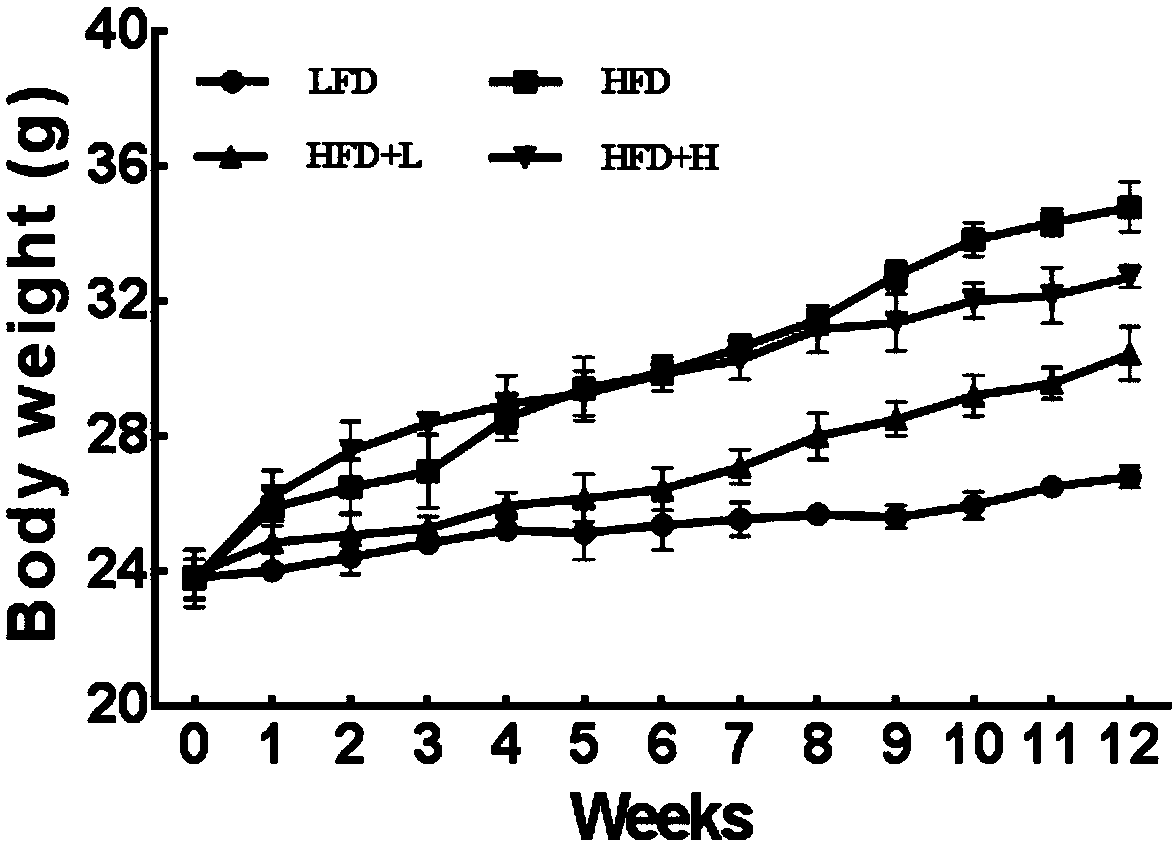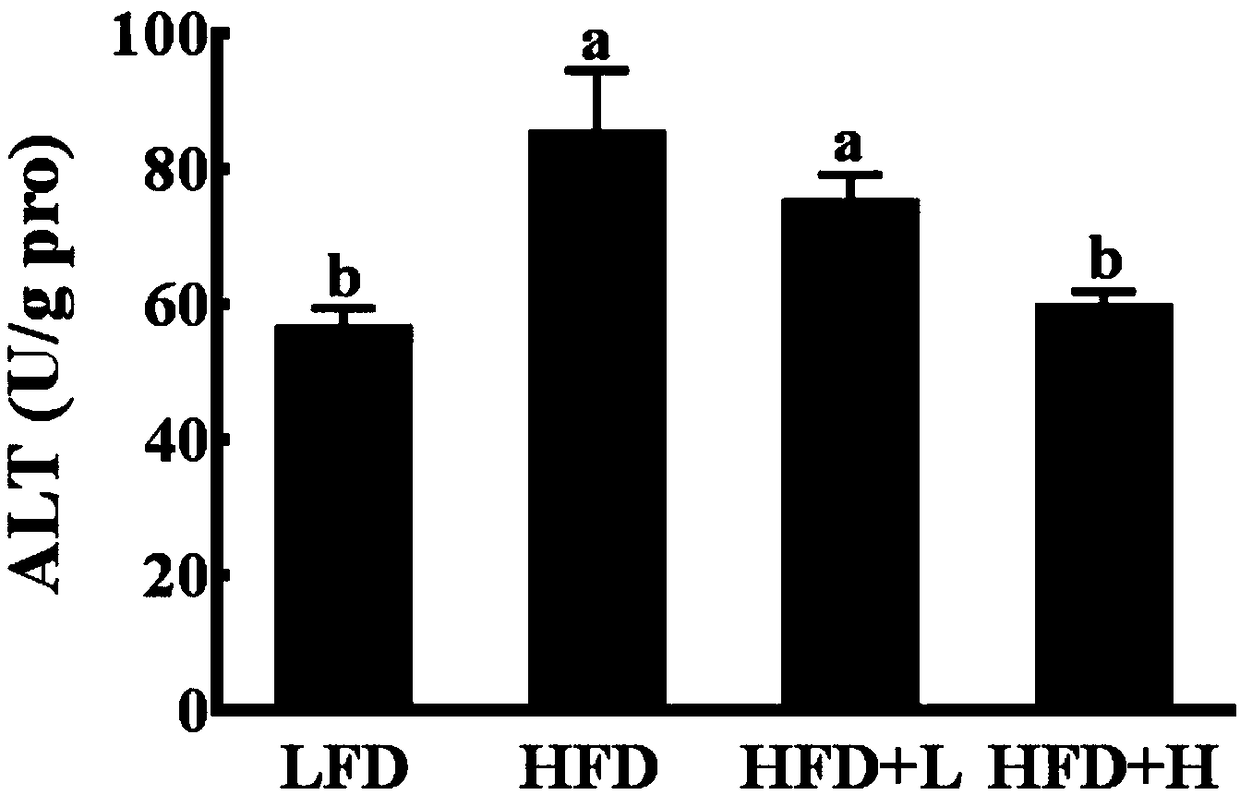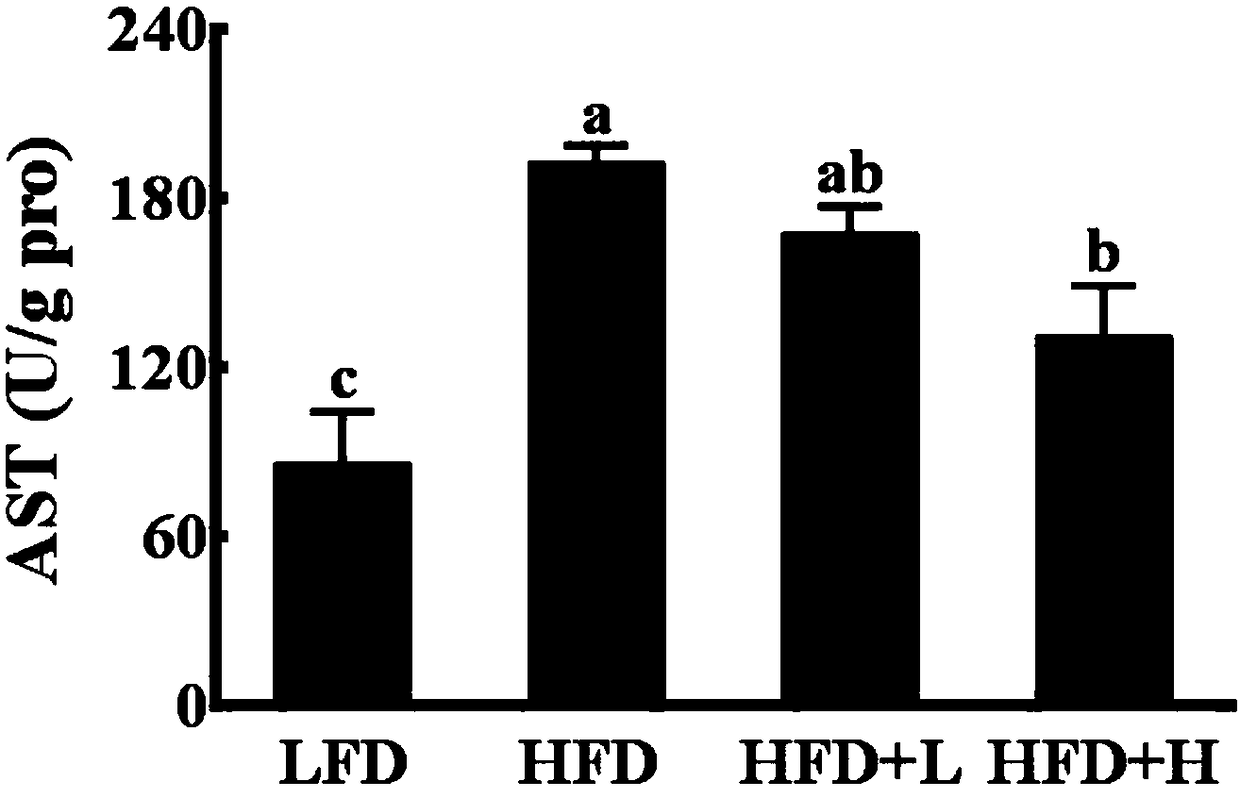Fat reducing application of taro leaf polysaccharide
A technology of bean taro and polysaccharides, which is applied in the field of medicine, can solve the problems that the weight loss activity of bean taro leaf polysaccharides is rarely reported, and achieve significant weight loss and fat-lowering effects, good development prospects, and the effect of reducing triglyceride and total cholesterol content
- Summary
- Abstract
- Description
- Claims
- Application Information
AI Technical Summary
Problems solved by technology
Method used
Image
Examples
Embodiment 1
[0048] Embodiment 1, the weight loss application of bean taro leaf polysaccharide, such as Figure 1-Figure 5 It has been shown that taro leaf polysaccharide has a significant weight-loss and lipid-lowering effect. The specific preparation steps of bean taro leaf polysaccharide are as follows:
[0049] (1), preparation of bean taro leaf polysaccharide crude product:
[0050] (1.1), according to the solid-liquid ratio of 1g:10ml, weigh 100g of taro leaves and add 1000mL of distilled water, extract in 80°C water bath for 4h (enzyme inactivation is also achieved during extraction), then beat, and then centrifuge (4000r / min centrifuge 30min), the supernatant obtained by centrifugation was suction filtered and the filtrate was collected;
[0051] (1.2), replace the bean taro leaves in step (1.1) with the centrifuged filter residue obtained in step (1.1), repeat the extraction 2 times, combine the filtrate three times and concentrate by rotary evaporation until it is 1 / 5 of the or...
Embodiment 2
[0067] Embodiment 2, the influence of bean taro leaf polysaccharide on fat, liver and other organ indexes of obese mice;
[0068] Fasted for 24 hours after 12 weeks of intragastric administration in Example 1, weighed the body weight, and killed the mice by cervical dislocation after blood was taken from the orbits. The fat around the kidneys and epididymis was taken, and the heart, liver, spleen, and kidney were quickly removed. , brown fat and other tissues and record the weight, the specific data are shown in Table 1.
[0069] Table 1 The effect of the polysaccharide intervention of bean taro leaf on the organ index of mice
[0070]
[0071] According to Table 1, it can be seen that the intervention of taro leaf polysaccharide can alleviate the decline of liver index in obese mice induced by high-fat diet, and at the same time, the intervention of different doses of taro leaf polysaccharide can significantly reduce the peritesticular fat and perirenal fat index of obese ...
Embodiment 3
[0072] Embodiment 3, the effect of bean taro leaf polysaccharide on serum triglyceride, total cholesterol, alanine aminotransferase and aspartate aminotransferase content in obese mice;
[0073] The mice after 12 weeks of intragastric administration in Example 1 were fasted for 24 hours, and the mice were killed by cervical dislocation after blood was taken from the eye sockets. The blood samples were centrifuged at 1500 rpm for 15 minutes, and the serum was taken and preserved, and the glycerol in the serum was analyzed by a Toshiba automatic biochemical analyzer. The contents of triester and total cholesterol were determined, and the specific data are shown in Table 2.
[0074] Table 2 The effect of the intervention of bean taro leaf polysaccharide on the serum indexes of mice
[0075]
[0076] According to Table 2, it can be seen that the intervention of high-dose bean taro leaf polysaccharide can reduce the total cholesterol content in the serum of obese mice induced by...
PUM
 Login to View More
Login to View More Abstract
Description
Claims
Application Information
 Login to View More
Login to View More - R&D
- Intellectual Property
- Life Sciences
- Materials
- Tech Scout
- Unparalleled Data Quality
- Higher Quality Content
- 60% Fewer Hallucinations
Browse by: Latest US Patents, China's latest patents, Technical Efficacy Thesaurus, Application Domain, Technology Topic, Popular Technical Reports.
© 2025 PatSnap. All rights reserved.Legal|Privacy policy|Modern Slavery Act Transparency Statement|Sitemap|About US| Contact US: help@patsnap.com



